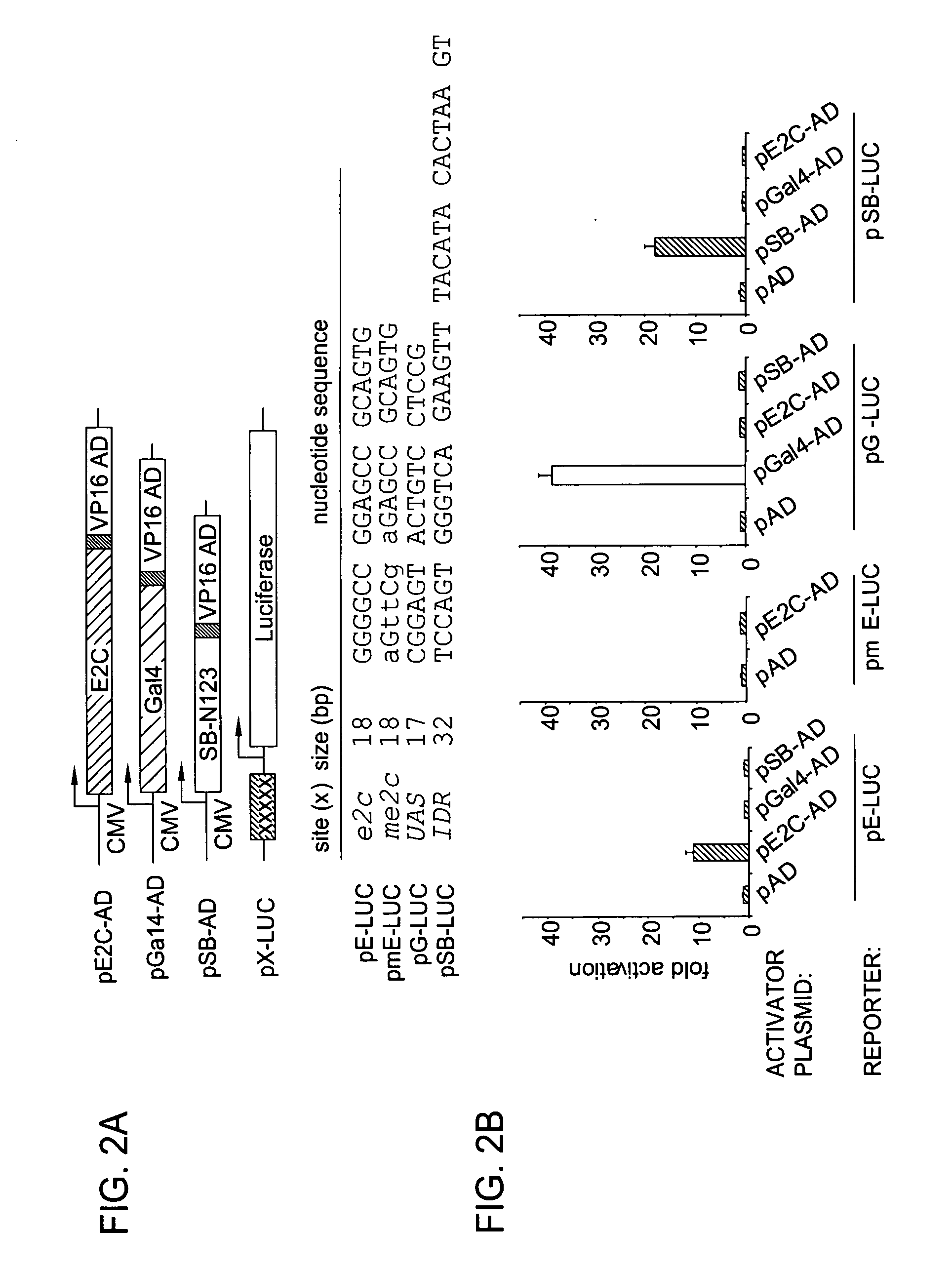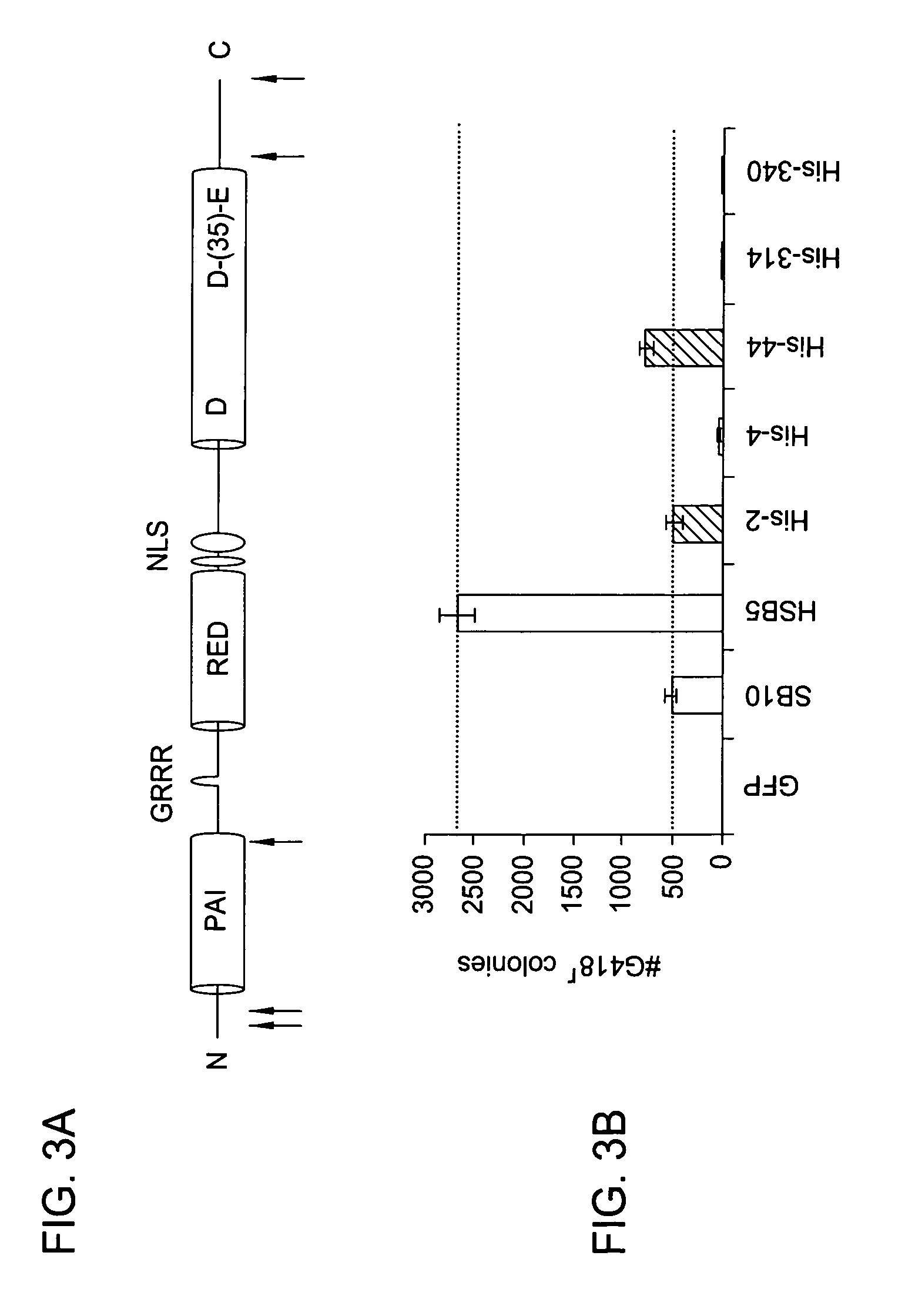Development of a transposon system for site-specific DNA integration in mammalian cells
- Summary
- Abstract
- Description
- Claims
- Application Information
AI Technical Summary
Problems solved by technology
Method used
Image
Examples
Embodiment Construction
[0046] Embodiments of the present invention generally provide a method of site-specific DNA integration mediated by transposases. Embodiments of the present invention also provide transposase fusion proteins, such as Sleeping Beauty (SB) transposase fusion proteins, that direct site-specific DNA integration. As defined herein, a transposase fusion protein is a protein comprising the amino acid sequence of a transposase (or of at least a portion of a transposase having transposase activity) and the amino acid sequence of one or more other proteins (or at least of a portion of one or more other proteins). The transposase fusion protein may also comprise other amino acids, such as amino acids that provide a flexible linker region between the transposase and other protein domains of the fusion protein such that the transposase fusion protein is capable of folding properly and retains activity.
[0047] Embodiments of the invention provide a method of integrating an exogenous nucleic acid ...
PUM
| Property | Measurement | Unit |
|---|---|---|
| Flexibility | aaaaa | aaaaa |
Abstract
Description
Claims
Application Information
 Login to View More
Login to View More - R&D
- Intellectual Property
- Life Sciences
- Materials
- Tech Scout
- Unparalleled Data Quality
- Higher Quality Content
- 60% Fewer Hallucinations
Browse by: Latest US Patents, China's latest patents, Technical Efficacy Thesaurus, Application Domain, Technology Topic, Popular Technical Reports.
© 2025 PatSnap. All rights reserved.Legal|Privacy policy|Modern Slavery Act Transparency Statement|Sitemap|About US| Contact US: help@patsnap.com



